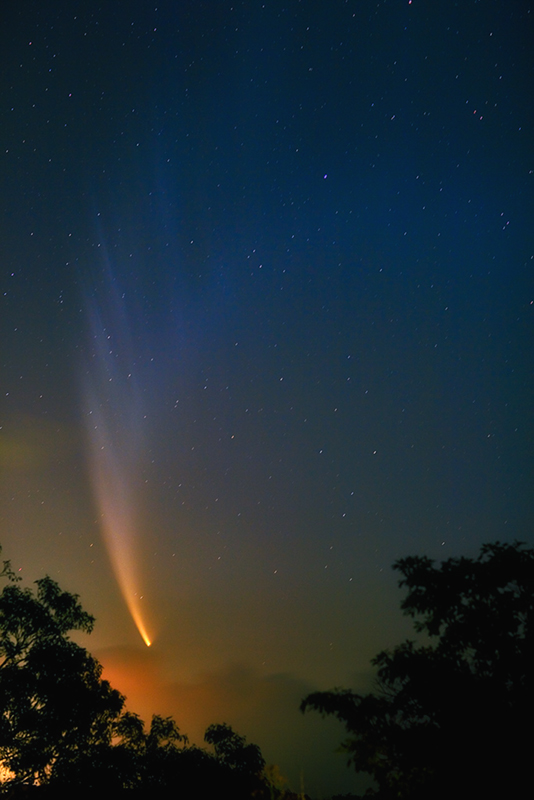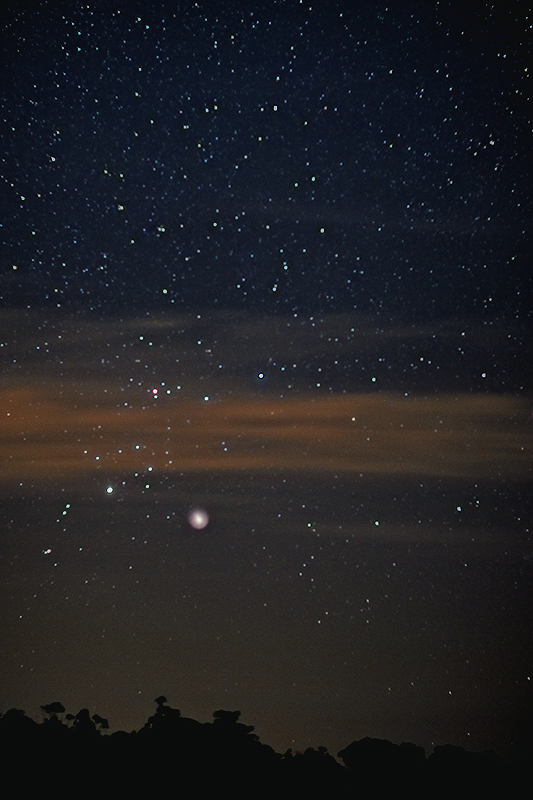From memory Paul, it was moving 'back', away from the sun.
It was, I think, on it's return after it had gone around the sun, if that makes sense.
We were waiting here in the south for it to survive and come around out of the approach.
We were fearful that it was not going to make the approach, that it would breakup or hit the sun.
So yes you can tell where the sun was in relation but it was receding away.
I'm not sure if you know but not always does the tail project away from the sun.
Comets have two tails usually (not always visible), the ion tail and the dust tail.
the dust tail sometimes doesn't stream back from the sun but foolows the comet's orbital path.
It's possible for one of the tails to appear in front of the comet as it travels, amazing.
skyandtelescope.com said:
Two Types of Tails
Ultraviolet light ionizes the neutral gas blown off the comet, and the solar wind carries these ions straight out from the Sun to form the ion tail, which typically glows blue.
The dust tail on the other hand is neutral, composed of small dust particles (similar in size to those found in cigarette smoke).
Pressure from the Sun's radiation pushes these particles away from the comet’s nucleus.
These particles continue to follow the comet’s orbit around the Sun, and form a diffuse, curved tail that typically appears white or pink from Earth.
Have a look at the following comet (Comet Holmes).
It was a very unusual comet in that we got a head on look at it.
They dubbed it 'The Jelly Fish' comet.
Sometimes you need a telescope, sometimes just a lens on a camera.
It all is a matter of scale.
I have been very fortunate to witness some of the most spectacular comets in recent history and I have photos of each one.

Below is a wide angle of Holmes, just a camera and lens.
and then a close-up with a telescope.








